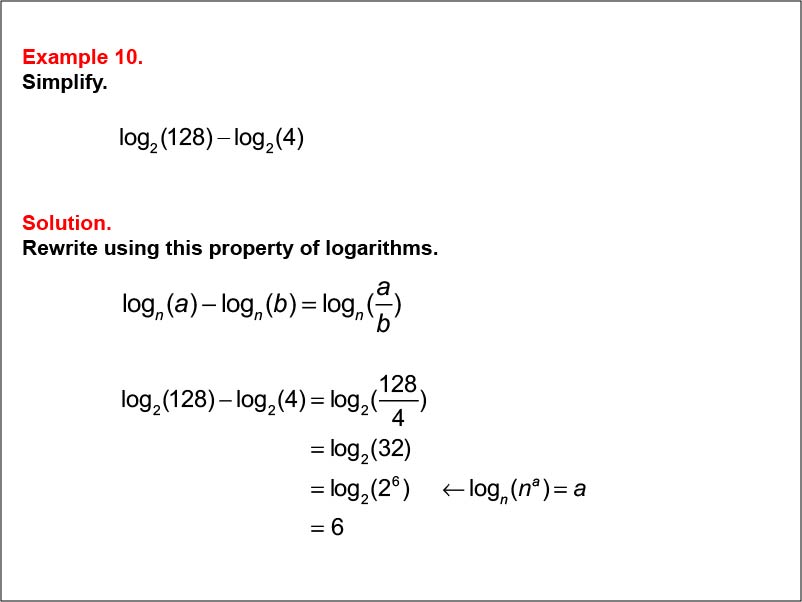
Display Title
Math Example: Laws of Logarithms: Example 10
Display Title
Math Example: Laws of Logarithms: Example 10

Topic
Logarithms
Description
This example demonstrates the simplification of the logarithmic expression log2(128) - log2(4) using the quotient property of logarithms. The solution applies the rule logn(a) - logn(b) = logn(a/b) to rewrite the expression as log2(128/4), which simplifies to log2(32). Since 32 = 25, the final answer is 5.
Logarithms are a fundamental concept in advanced mathematics, particularly in algebra and calculus. These examples help teach logarithmic properties by providing step-by-step demonstrations of how to manipulate and simplify logarithmic expressions. By working through various scenarios, students can gain a deeper understanding of the rules governing logarithms and how to apply them in different contexts.
It's crucial for students to see multiple worked-out examples to fully grasp logarithmic concepts. Each example reinforces the principles while introducing slight variations, helping students recognize patterns and develop problem-solving strategies. This approach builds confidence and proficiency in handling logarithmic expressions, preparing students for more complex mathematical challenges.
Teacher's Script: Let's look at this example involving the difference of logarithms. We have log2(128) - log2(4). When we subtract logarithms with the same base, we can use the quotient rule. This means we can rewrite it as log2(128/4). Now, what's 128 divided by 4? That's right, it's 32. So we have log2(32). Remember, 32 is 2 to what power? It's 25. Therefore, log2(32) = 5. This example shows how we can use logarithm properties to simplify expressions and find exact values.
For a complete collection of math examples related to Logarithms click on this link: Math Examples: Laws of Logarithms Collection.
| Common Core Standards | CCSS.MATH.CONTENT.HSF.BF.B.5 |
|---|---|
| Grade Range | 9 - 12 |
| Curriculum Nodes |
Algebra • Exponential and Logarithmic Functions • Laws of Logarithms |
| Copyright Year | 2013 |
| Keywords | logarithms, laws of logarithms |